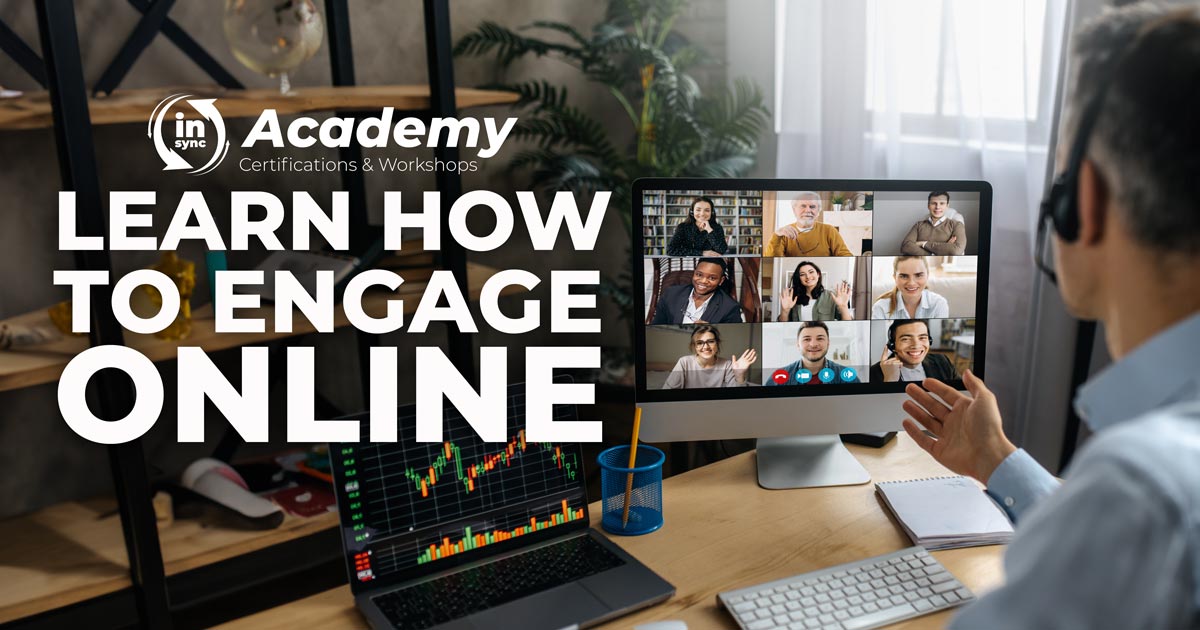5 min read
Why Go Live? Accountability & Shared Purpose in the Virtual Classroom
 Jennifer Hofmann
:
Feb 2, 2021 12:32:50 PM
Jennifer Hofmann
:
Feb 2, 2021 12:32:50 PM

 It’s 7:30 AM on a Monday morning. I’m logged in to a Zoom call with 22 strangers. A scattering of novelists. A few bloggers. Two high school students working on homework. Some folks recording podcasts. And at least one person working on their taxes.
It’s 7:30 AM on a Monday morning. I’m logged in to a Zoom call with 22 strangers. A scattering of novelists. A few bloggers. Two high school students working on homework. Some folks recording podcasts. And at least one person working on their taxes.
We are on camera, and on mute. And working independently for two hours. Many of us will do this every day this week.
I am a member of a free, open group called “Shut Up & Write.” According to the organizers, “Studies have shown that even the smallest sense of belonging increases performance on a variety of tasks. When you show up for a Shut Up & Write event, not only are you supported and motivated by everyone else writing around you, you are also a part of a community of writers all over the world.”
The way it works is simple. You pick one of the dozens of Zoom sessions around the world and login. You turn off distractions and have a goal ready for the one - or two - hour session. During the first five minutes, everyone introduces themselves and shares their intention for the time. Then you mute, and you write.
If you’d like to collaborate with someone, you can ask to be sent to a breakout room for 10 minutes. If someone is working on a project you have a particular interest in, you can connect with them in chat.
At the end of the session, the writers spend a few minutes updating the rest of us on their progress towards their individual goals. Or lack of progress. (No judgement! They still showed up.)
I started dropping in on these sessions this year trying to break through a creativity block I’ve been struggling with since the beginning of quarantine. And I have found the experience amazing. What motivates individuals to show up with a bunch of strangers and work independently? What makes all of THEM show up?
I asked some of my fellow writers why they showed up and these are some of the answers…
-
This structure, this commitment to others becomes a commitment to self but this is commitment without the burden of social expectations.
-
It’s camaraderie. If I can add a social component to a task I’m not super fond of, I’m more likely to do it. It’s the feeling of support and being in it together that I enjoy. And getting to know people in small ways over time feels nice and adds to the desire to show up.
-
Connection. And lots of learning and potential for help when needed.
-
The energy, support and emotional connection… This group is the reason I get up this early in the morning!
-
I like how aspirational projects get just as much air time as "must do" projects – a good reminder that all of it matters.
-
We aren’t there to hold each other’s hands… but we do!
Many individuals leave their cameras on for the entire session. I laugh at myself because I don’t enjoy being on camera for most virtual meetings. But for these sessions, I show up right out of bed, barely brushing my hair, and not worrying about my visual presence. Because I am there for one purpose, and that is to write.
It’s a very fulfilling experience. And the time flies.
A Practical Application of Social Learning
In the mad rush to migrate training programs to the virtual classroom in 2020, I think we’ve missed something. It’s not just about content. The simple act of working together (even when you're not talking to each other) provides accountability and motivation for the learner to participate in a meaningful way in a structured learning environment.
I think this is the reason we value face to face training so much. And the reason we miss it. The Shut Up & Write experience proves to me that we can create learning experiences that provide value in similar ways to more traditional approaches.
In my case, I simply log on, share my intention with the other authors, and then get to work. I knew I was working with like-minded learners towards our individualized goal of getting some writing done. In this situation my intent exactly matched the intent of the experience - they were aligned. I found the experience very engaging because I knew I was there to accomplish what I, personally, needed to accomplish. The safe space truly fostered environmental engagement, and the shared purpose nurtured emotional engagement. This is exactly the learner engagement we are trying so hard to achieve in our virtual classroom lessons.
It turns out that merely being in a group and participating in a group provides impetus and motivation to the learner. In the late 1970s, Albert Bandura developed and published what has become known as social learning theory.
“Social learning theory is a theory of learning process and social behavior which proposes that new behaviors can be acquired by observing and imitating others. It states that learning is a cognitive process that takes place in a social context and can occur purely through observation or direct instruction, even in the absence of motor reproduction or direct reinforcement.”
This is exactly what I have experienced in this writing group. Pretty cool, I think.
One of the more important aspects of this theory is that a learner learns through observation of the behaviors of others in a learning environment. Adding to this argument, Etienne Wenger-Trayner, in his early work on communities of practice and learning, would tell us that the sense of belonging within that group of authors was a motivating force in my participation.
Applying Social Learning to the Virtual Classroom Experience
There's an important lesson to be learned here about how to take learning virtual. Simply collecting people in the room (virtual or otherwise) without integrating the intent of the learning experience, the intent of the learner, and how people might interact to make the learning better or more effective produces less than optimal outcomes.
Previously, we've explained it like this: For the learner to develop intellectual engagement, the learner’s intent has to be closely aligned to the design intent. Note that this is not to say that all training must be directly relevant to the profession or professional interests of the learner, but rather that the learner must perceive an alignment of the instruction with their own intent.
That’s exactly what happens in these sessions. I go to write. They expect me to write. I write.
To accomplish this in a virtual learning experience we need to consider:
- How will individuals perceive the learning experience and its alignment with their personal learning goals? What do they want to get out of it?
- How are they going to interact, and why? Without setting expectations for how learners will interact with the content, the facilitator, and each other means that when learners do have something to contribute, they may have no idea how to do it.
- What does success look like in this learning experience? We need to provide a structure so that learners can understand what the outcome looks like before they get started.
If we answer these questions, learners will enter and participate in a learning experience knowing what to expect and how they're going to apply it - even if they're not interacting with one another or working on something collaboratively but instead working individually towards a goal relevant only to themselves.
Turning Virtual Classrooms into Safe Learning Spaces
Adult Learning Theory tells us that people need to think of learning as relevant to their own need - in this case you want to give the learner an opportunity to integrate what the learning is going to give them with their interest, intent, or need. As a designer, don’t keep your objectives or relevance a secret - you want the learner to be thinking about what the end state looks like and be working towards it throughout the entire learning experience, with a pre-formed conception of how they're going to apply their learning in their job even as they're going through the learning.
Understanding the learner intent and designing an experience to support that intent will make the experience valuable. You don’t always need lots of technology, fancy icebreakers, or complex designs. You just need to create an environment in which people can achieve their intent.
We don’t need to fill up virtual classroom time with talking and constant collaboration to make it useful. Constant engagement is achieved when each individual is involved in independent creation and design, and evaluation of material. Allowing structured time for valuable independent work truly helps us move up the pyramid of Bloom's Taxonomy of Learning. We don’t have to be just sharing information… we can be providing opportunities for independent thinking that creates a path to mastery.
Learning is largely social. But it doesn’t need to be noisy. Learning can just be a safe space where you can move forward supported by your peers. By identifying a shared purpose and building in easy, but purposeful, ways to be accountable, we can make our virtual classroom sessions a place where people feel like they have achieved something.

Easily Elevate Virtual Learner Engagement
Instructional Designers and Virtual Classroom Facilitators: Do You Know How to Engage Online? In today's digital age, the landscape of learning and...

